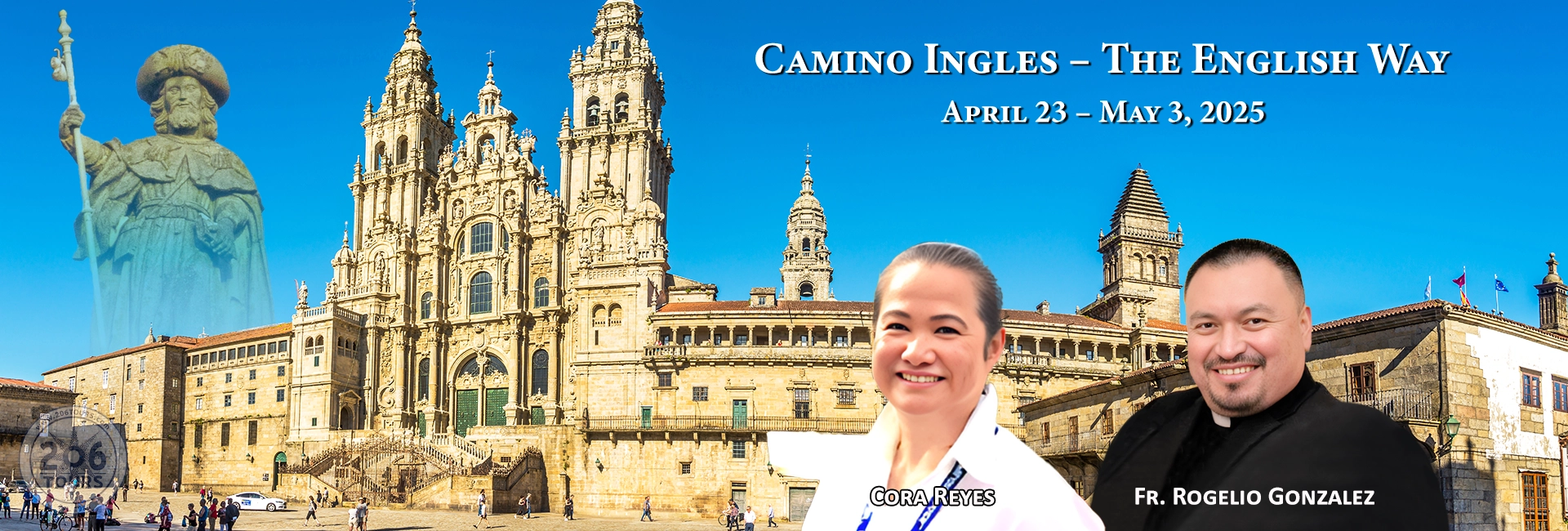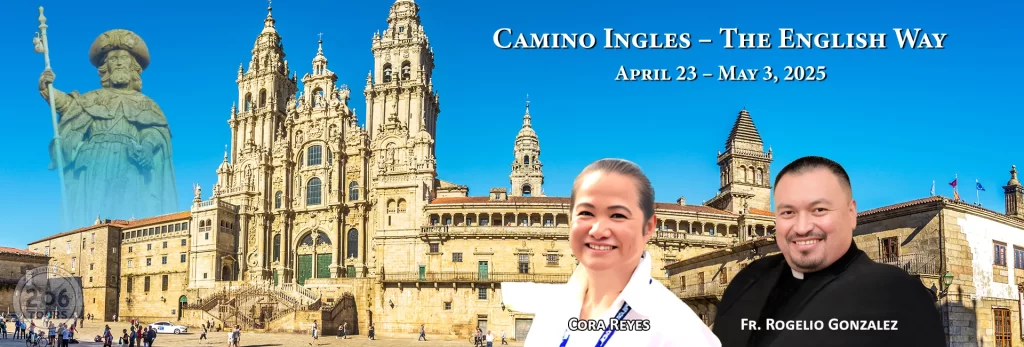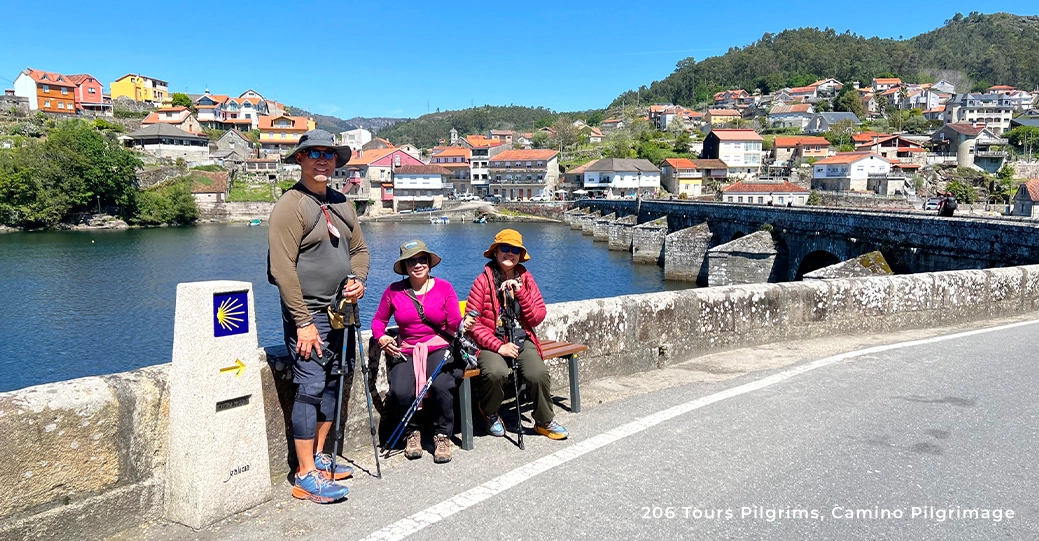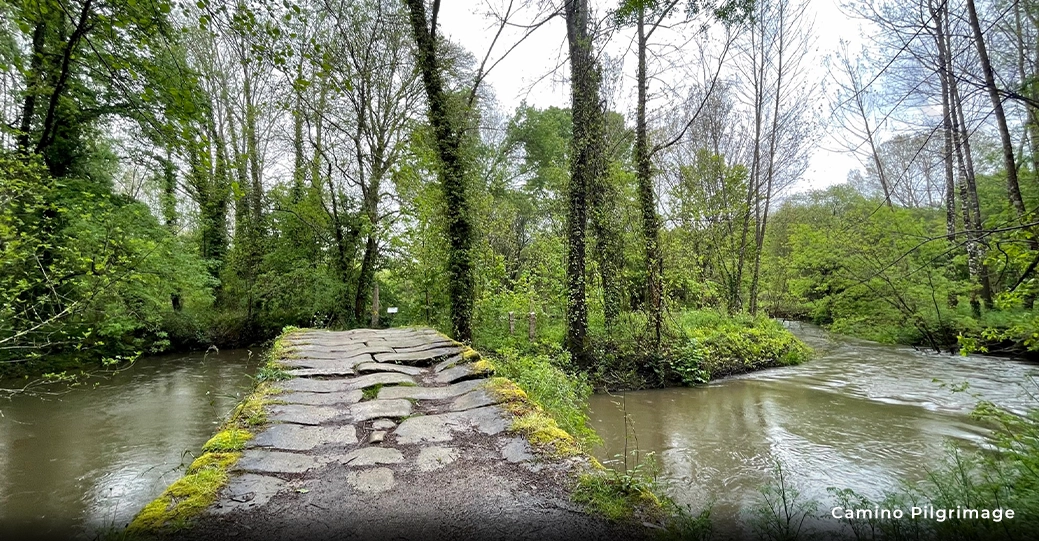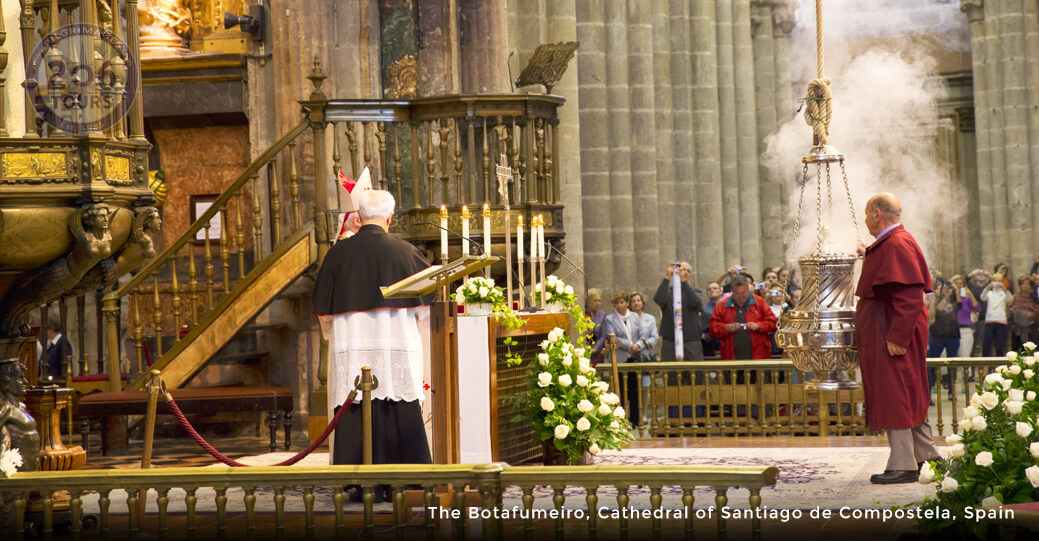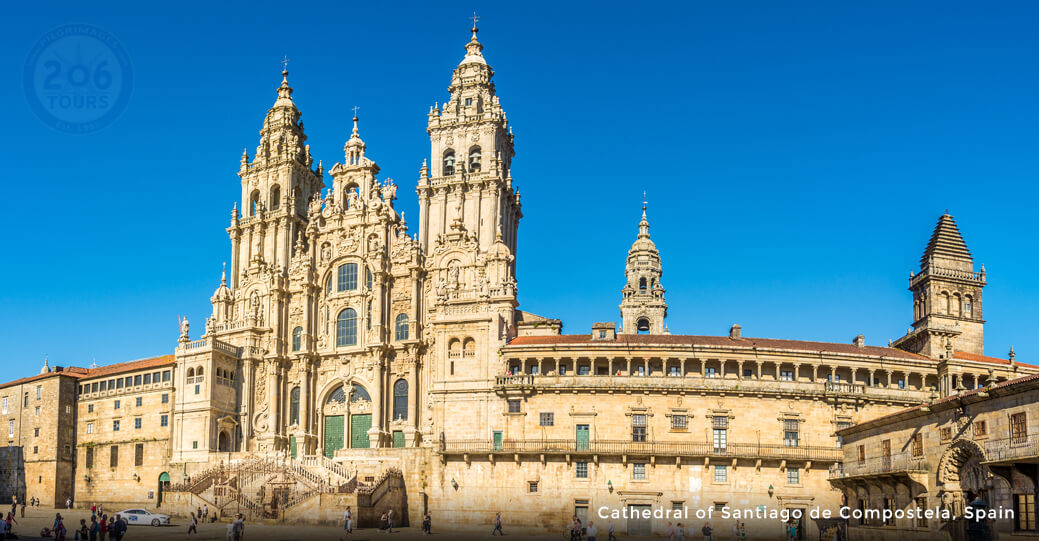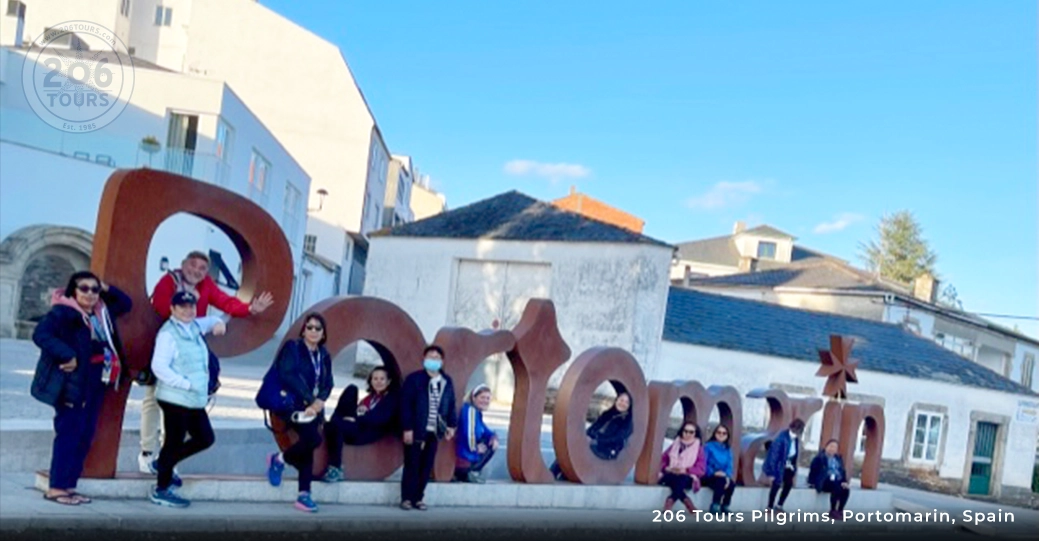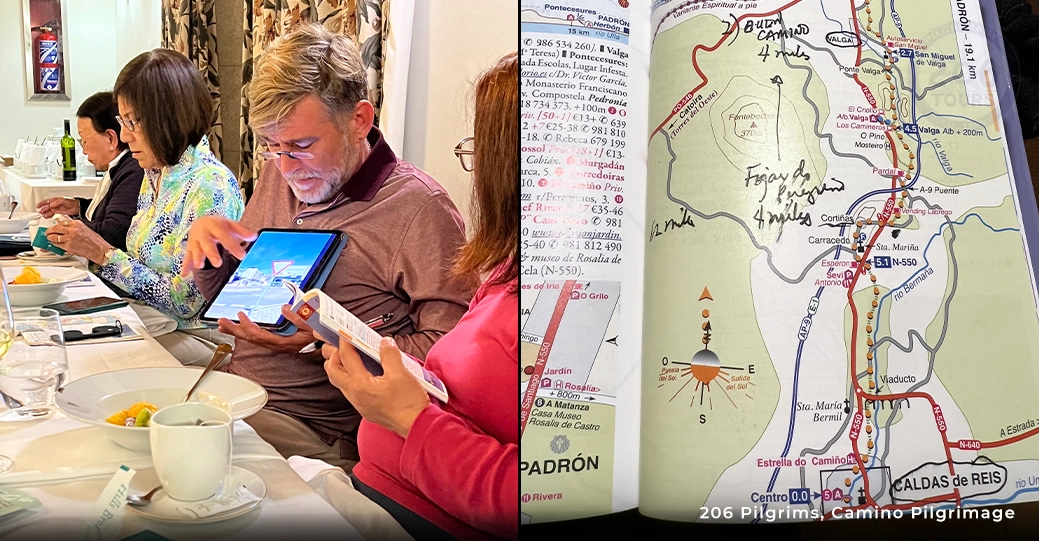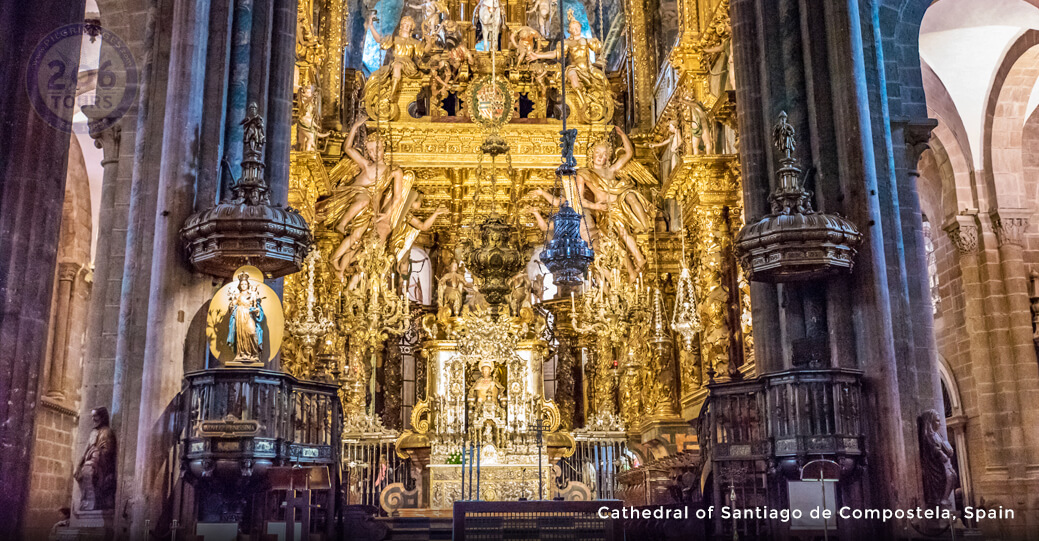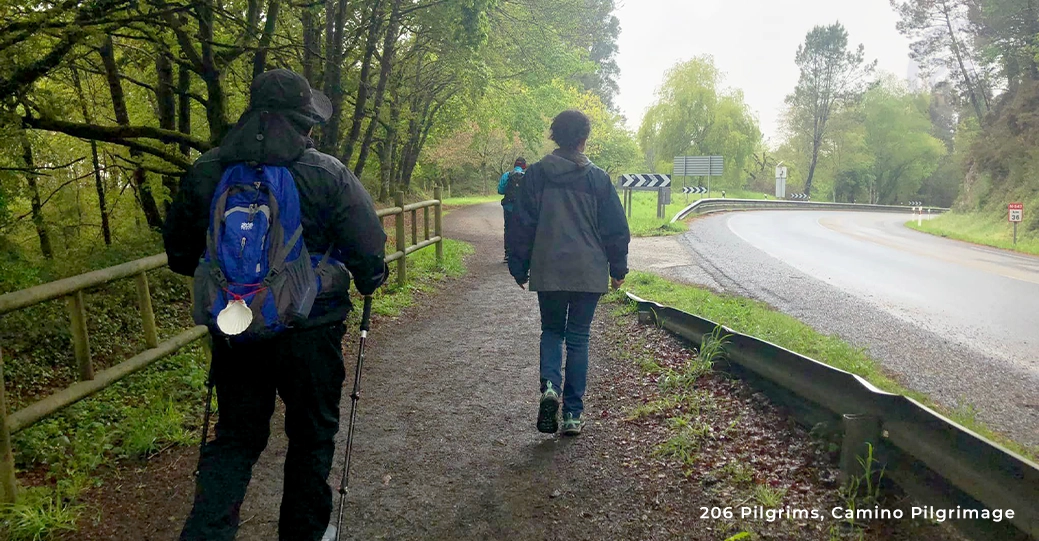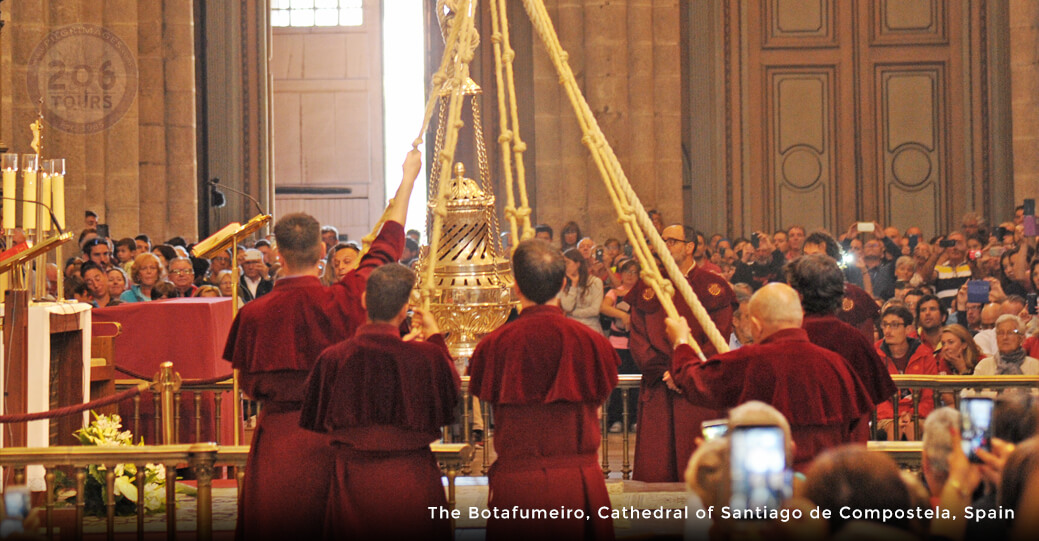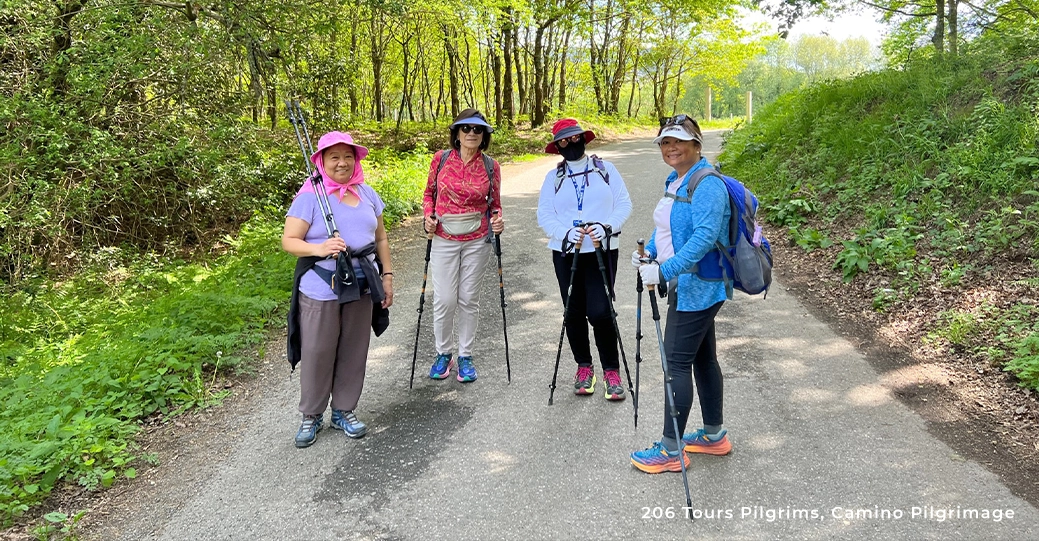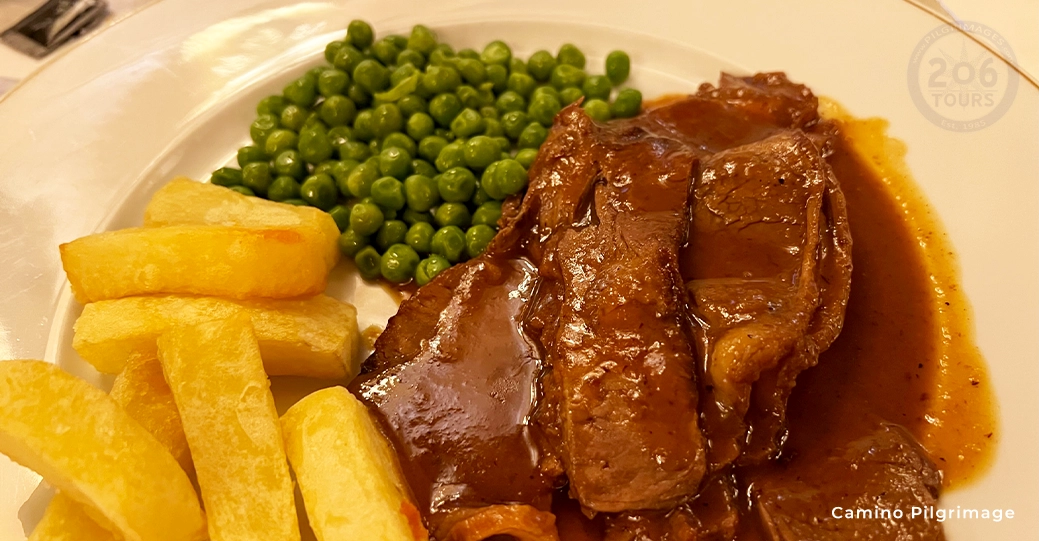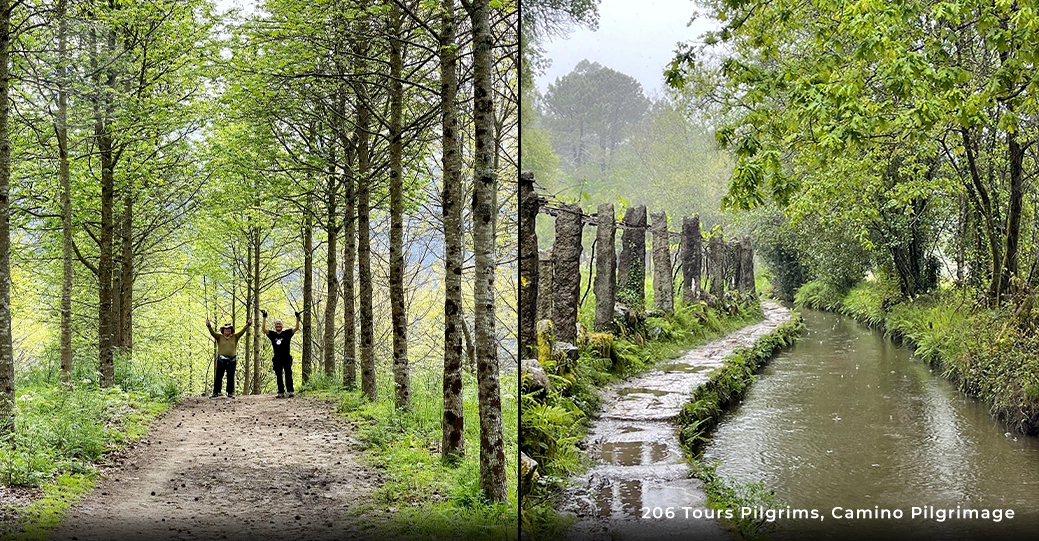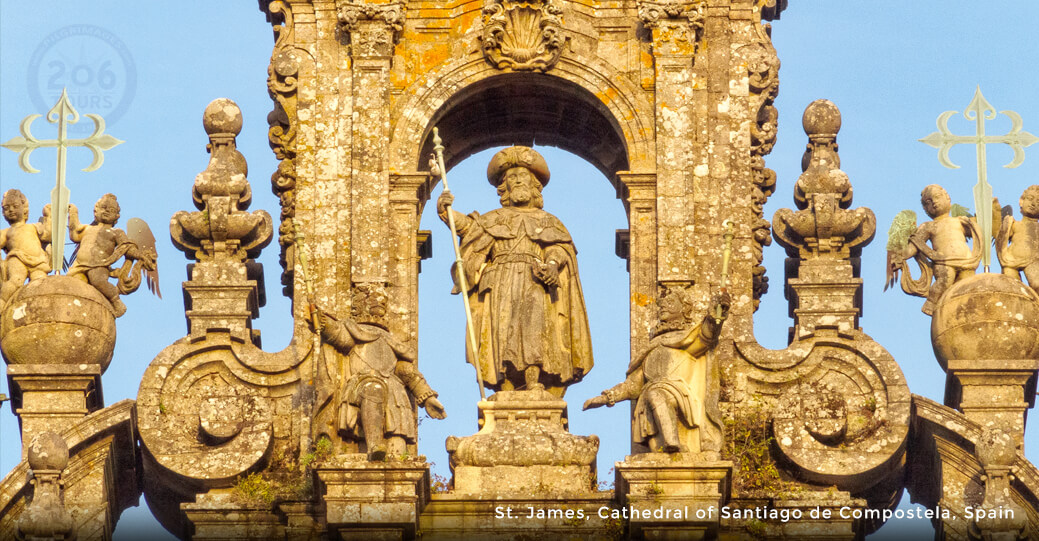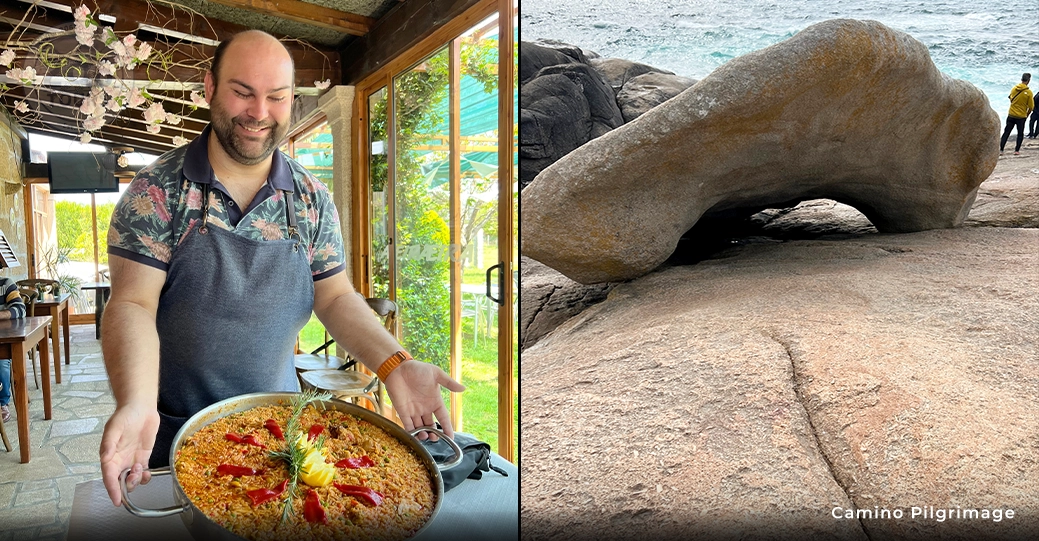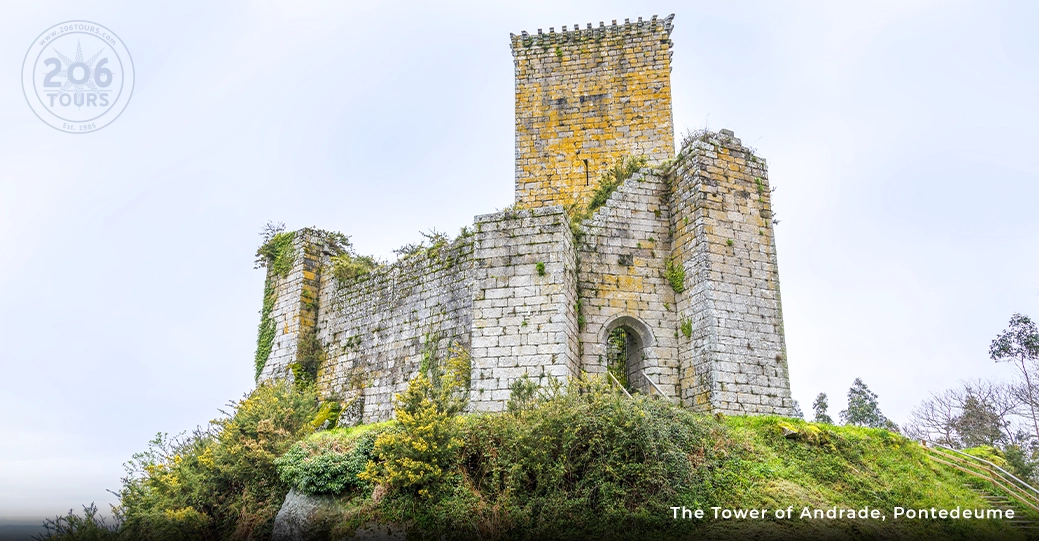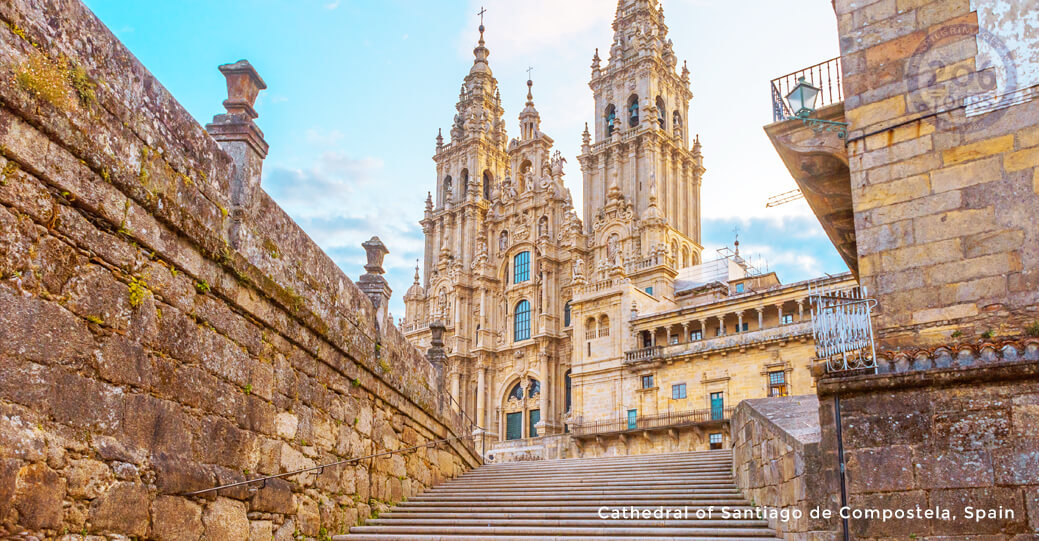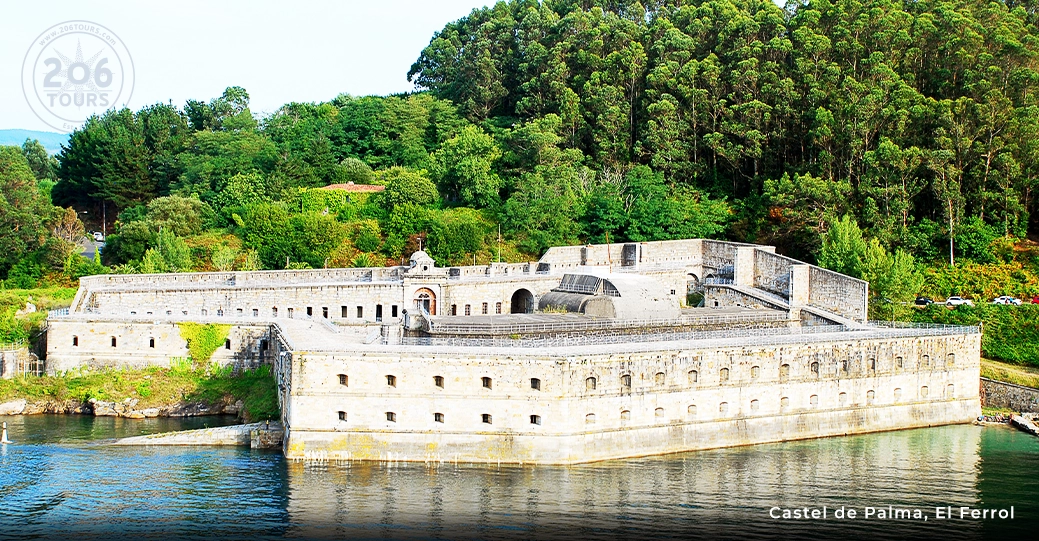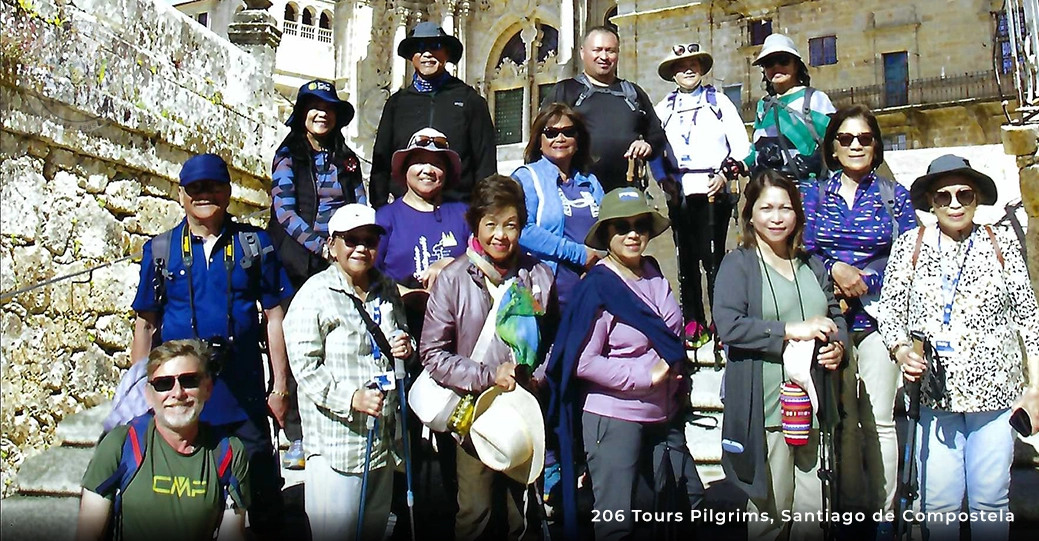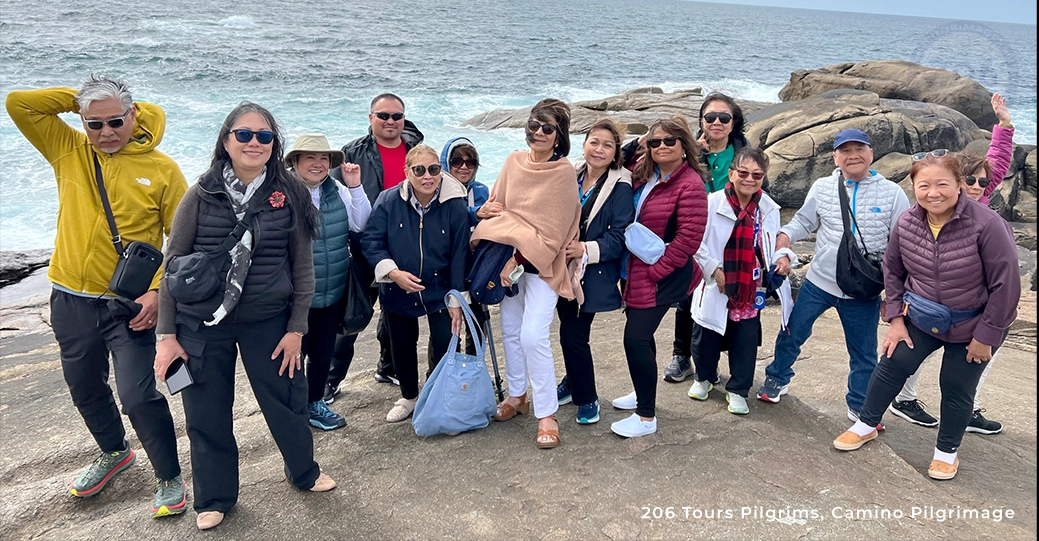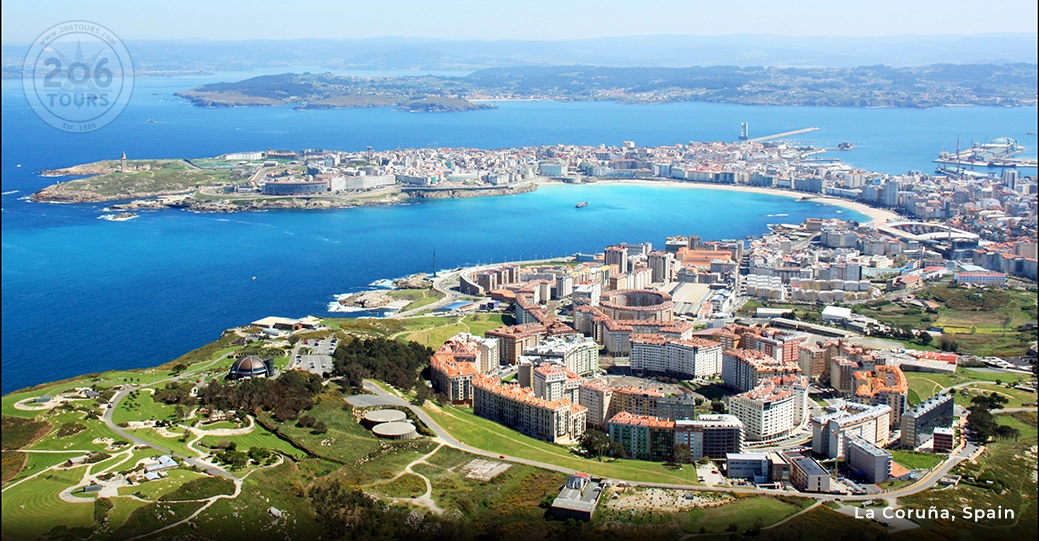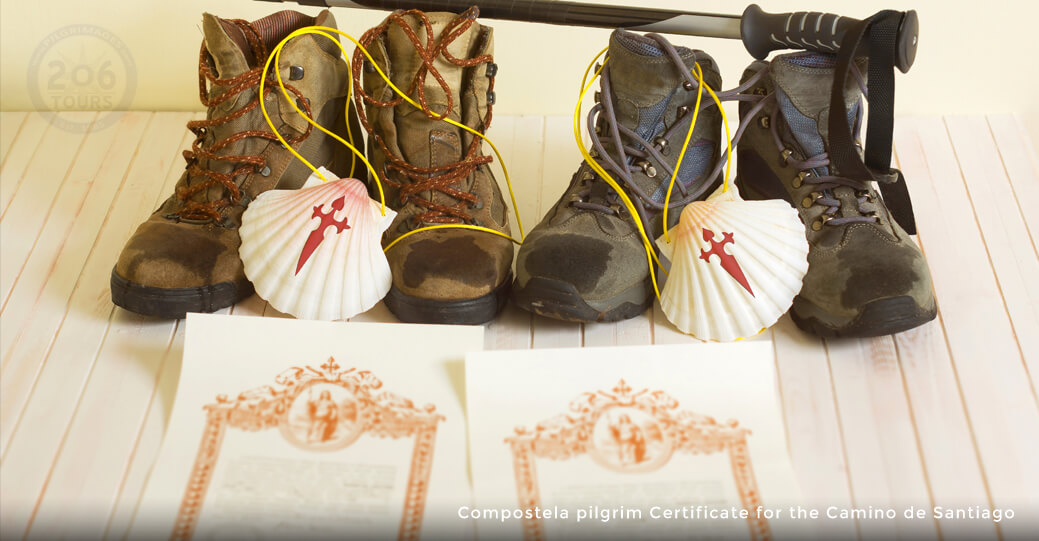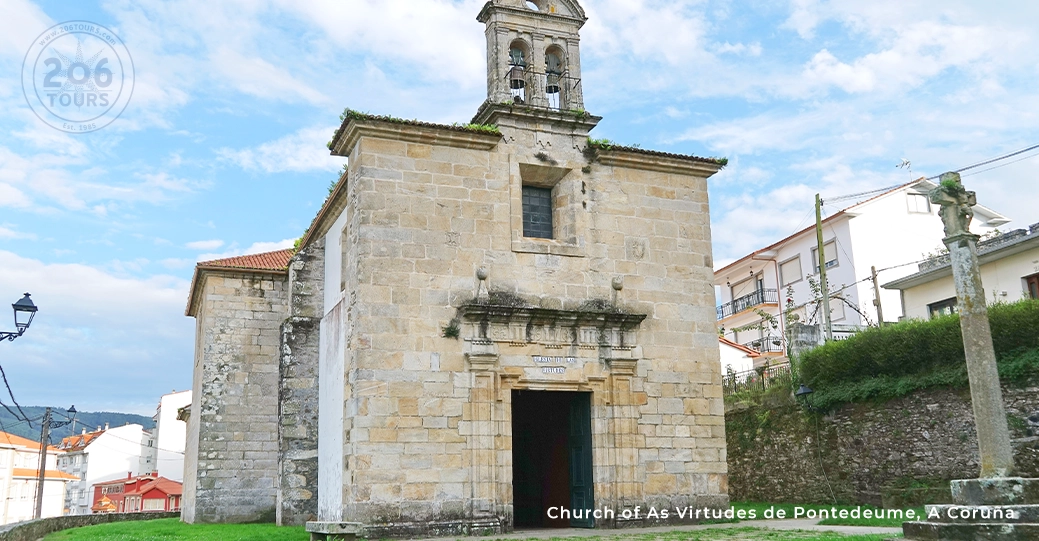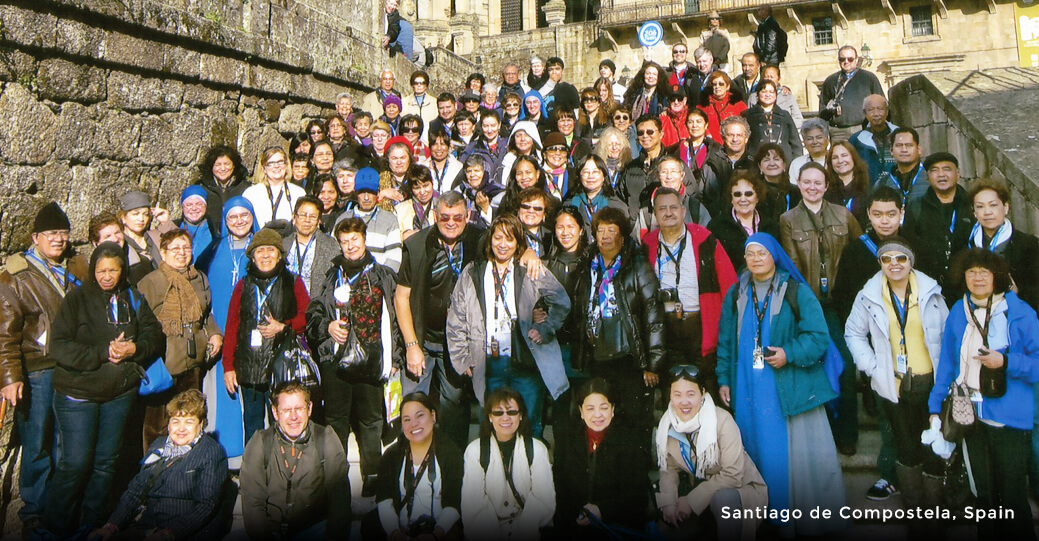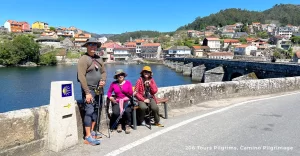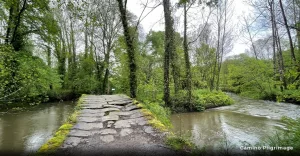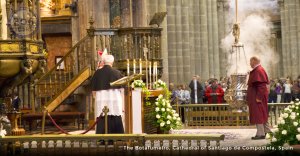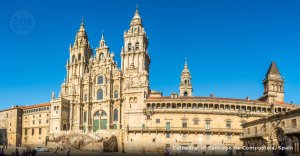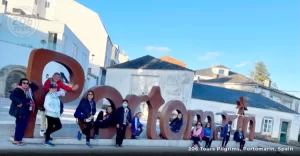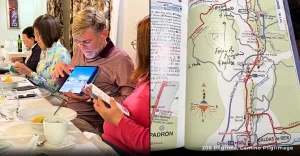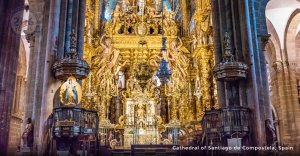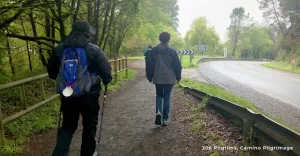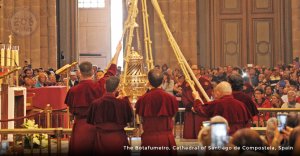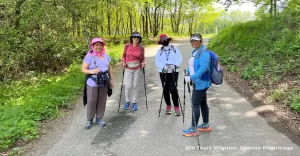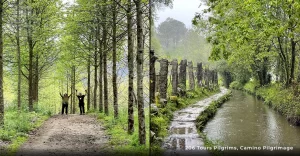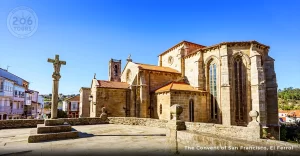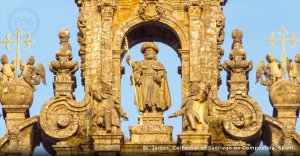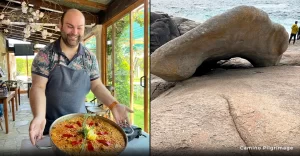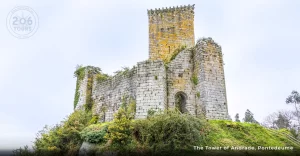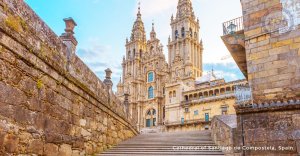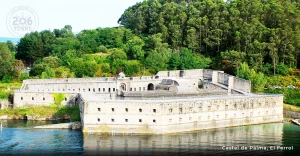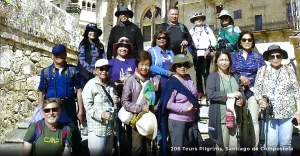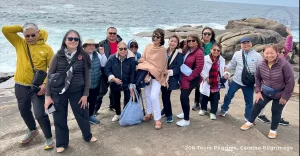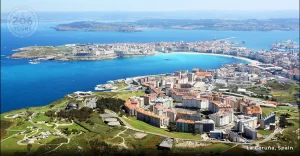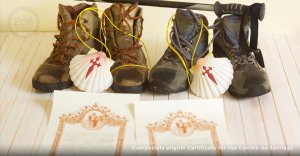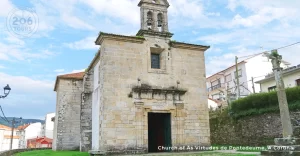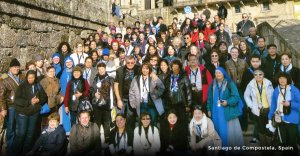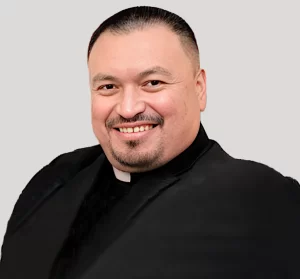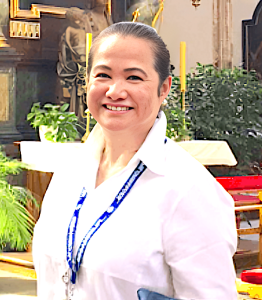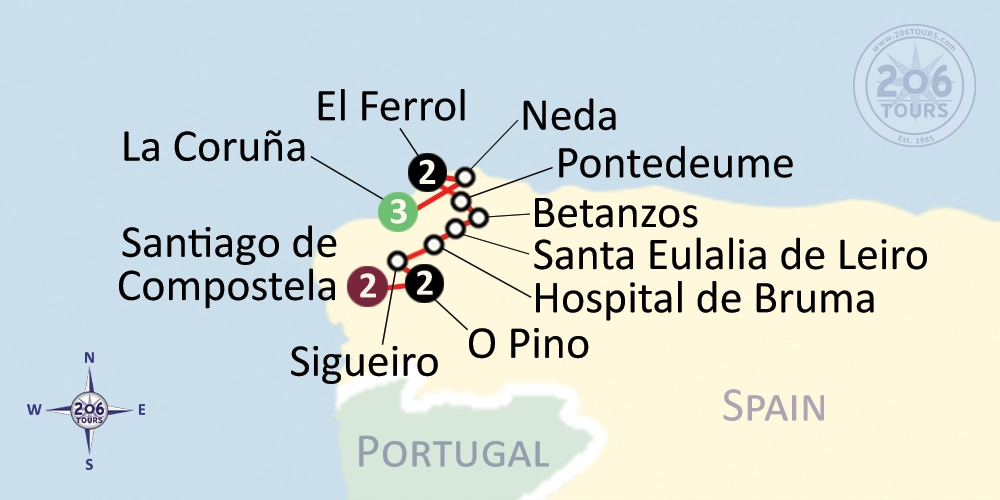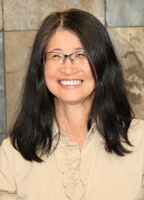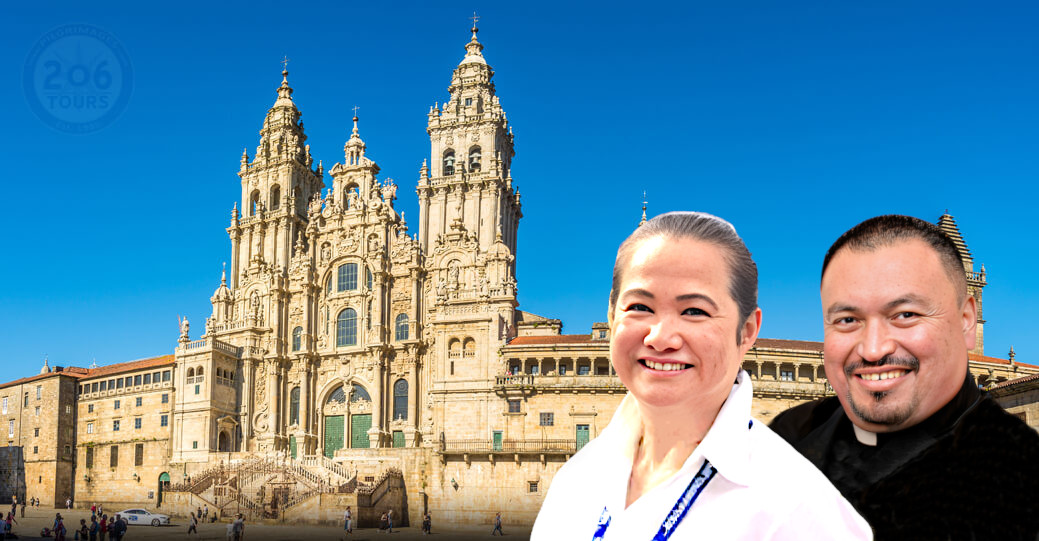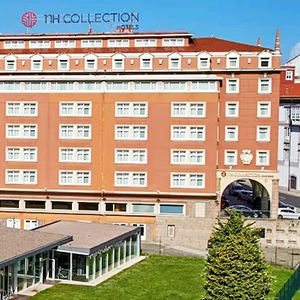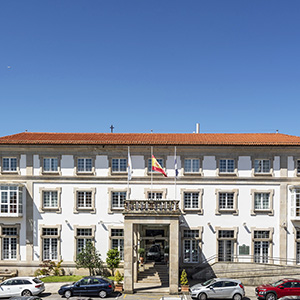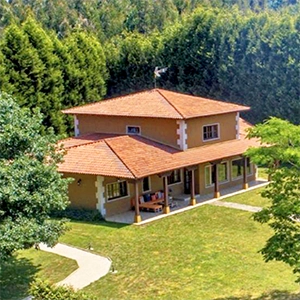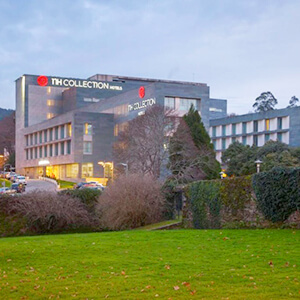Your trip includes
- Round-trip airfare from your desired Airport
- Airport Taxes and Fuel Surcharges
- Classic & Quaint Hotels and Inns along the Camino in double occupancy
- ~ 1 night: Apr 24 - 25: NH Collection A Coruña Finisterre or DoubleTree by Hilton A Coruna, A Coruña, Spain
- ~ 2 nights: Apr 25 - 27: Parador de Ferrol, El Ferrol, Spain
- ~ 2 nights: Apr 27 - 29: NH Collection A Coruña Finisterre or DoubleTree by Hilton A Coruna, A Coruña, Spain
- ~ 2 nights: Apr 29 - May 1: Vila Sen Vento, O Pino, Spain
- ~ 2 nights: May 1 - 3: NH Collection Santiago de Compostela, Santiago De Compostela, Spain
- Breakfast and Dinner daily
- 7 Lunches during walking days
- Wine and mineral water with dinners
- Transfers as per itinerary
- Transportation by air-conditioned motor coach
- Headsets where needed
- Tour Escort throughout (Javi is requested)
- Vehicle to assist pilgrims who are unable to complete any leg of the tour
- Assistance of a professional local Catholic Guide in A Coruna, El Ferrol and Santiago de Compostela
- El Camino de Santiago daily maps
- Sightseeing and admissions fees as per itinerary
- Mass daily & Spiritual activities
- Luggage handling (1 piece per person)
- Flight bag & Portfolio of all travel documents
Not Included
- Lunches and beverages not mentioned, Tips to your guide & driver.
Itinerary
While you will be removed from the routine of your everyday life, rest assured you will be taken care of with outstanding accommodations, meals and transportation with van / bus driving parallel to the path you walk each day. Should at any point you feel tired, need water, or any medical assistance, it will be readily available to you at check points that are set up along the way on your path. Tourists pass through places, places pass through Pilgrims.
Day 1 | Wednesday, April 23: Depart USA for La Coruña or Santiago Airport
Begin your spiritual journey by departing from your local airport on an overnight flight to Spain. Meals will be served onboard as you prepare for the pilgrimage ahead.
Day 2 | Thursday, April 24: La Coruña Airport – La Coruña
Upon arrival in Spain, collect your luggage and meet your tour guide. Transfer to your hotel to settle in before beginning your exploration of La Coruña. This city on the Iberian Peninsula is rich in history and beauty. Visit the Romanesque Church of Santiago, dating back to the 12th century, and stroll through serene gardens such as Mendez Nunez, San Carlos, or Santa Margarita. Highlights of the day include a stop at the Tower of Hercules, a 1st-century lighthouse and symbol of the city, and the Collegiate Church of Santa María, a late Romanesque masterpiece. You’ll also see the Baroque Church of San Jorge and the iconic Millennium Obelisk. Enjoy dinner and overnight in La Coruña.
Day 3 | Friday, April 25: El Ferrol - Neda (8.75 miles)
Your pilgrimage walking journey begins in El Ferrol, following the estuary of Ría de Ferrol with scenic views of coastal fortresses. Visit landmarks such as the Co-Cathedral of San Xiao, theConvent of San Francisco, and the historic Monastery of San Martiño de Xuvia, known for its stunning Romanesque apses. The day’s trek is an opportunity for quiet reflection as you enjoy dinner and overnight in El Ferrol.
Day 4 | Saturday, April 26: Neda - Pontedeume (12.5 miles)
Walk from Neda to Pontedeume, passing notable sites like the Church of Santa María, the Gothic Church of San Nicolás, and the Pilgrims’ Hospital of Sancti Spiritus. Cross the River Belelle on a charming footbridge before visiting San Nicolás Church, home to one of Galicia’s oldest crosses. Pause for breathtaking views of the Ferrol estuary and visit Pontedeume’s historic quarter, including the Tower of Andrade and the Church of Santiago. Dinner and overnight in El Ferrol.
Day 5 | Sunday, April 27: Pontedeume - Betanzos (12 miles)
This stage of the pilgrimage features a mix of steep climbs and serene descents through agricultural landscapes. Cross the Gothic Baxoi Bridge and stop at the Romanesque Church of Tiobre before ascending to the Renaissance Nosa Señora do Camiño. Enter Betanzos through the historic A Ponte Vella Gate and explore its sacred landmarks, including the Church of San Francisco, which houses the cenotaph of Fernán Pérez de Andrade. Dinner and overnight in A Coruña.
Day 6 | Monday, April 28: Betanzos – Santa Eulalia de Leiro (8.75 miles)
Depart Betanzos and climb through lush forests, pausing to visit rural churches such as Cos,Santuario Nosa Señora da Saleta, and Santa Eulalia de Leiro. Stop at the Chapel of As Travesas, a restful spot for pilgrims. This section marks the point where the Ferrol and Coruña branches of the Camino Inglés converge. Dinner and overnight in A Coruña.
Day 7 | Tuesday, April 29: Santa Eulalia de Leiro – Hospital de Bruma (8.75 miles)
This portion of the Camino Inglés is filled with serene woodland trails and a mix of Romanesque and Gothic churches, including the Capilla de San Lorenzo near Bruma. Conclude your day with a transfer to O Pino for dinner and overnight accommodations.
Day 8 | Wednesday, April 30: Hospital de Bruma – Sigueiro (15 miles)
Continue your journey through trails lined with pine forests and ancient villages. Visit the Church of San Paio, known for its beautiful Romanesque architecture, before reaching Sigüeiro. Explore the medieval pathways, the Fonte da Santiña, and the Tambre Bridge, which has guided pilgrims for centuries. Dinner and overnight in O Pino.
Day 9 | Thursday, May 1: Sigueiro - Santiago de Compostela (10 miles)
The final leg of your pilgrimage leads to Santiago de Compostela. Walk through the enchanting Enchanted Forest, a place of deep reflection, before arriving at the Cathedral of Santiago de Compostela. Here, embrace the statue of St. James and descend into the crypt where his relics are housed. Celebrate this spiritual milestone as you prepare for a restful evening in Santiago de Compostela.
Day 10 | Friday, May 2: Santiago de Compostela – Ponte Maceira and Cascada de Ezaro
Spend the morning exploring the city’s sacred nd historical landmarks. Marvel at the stunning architecture of the Cathedral of Santiago, blending Romanesque, Gothic, and Baroque styles, and visit the Obradoiro Square, Fonseca Palace, and Franco Street. In the afternoon, we will visit Ponte Maceira and Cascada de Ezaro. Ponte Maceira is known as one of the most beautiful villages in Spain, with one of the best-preserved bridges Ponte Vella built in the 13th century on the pillas of the ancient Roman bridge. Cascada de Ezaro flows from the Rio Xallas and is the only river in Europe that falls into the ocean in the form of a waterfall.
The day concludes with a group dinner to reflect on your spiritual journey. Overnight in Santiago de Compostela.
Day 11 | Saturday, May 3: Santiago de Compostela – Return to the USA
Transfer to the airport for your return flight, carrying the blessings and memories of your pilgrimage home. Until we meet again, Buen Camino!
*206 Tours Disclaimer:
Though every effort will be made to follow the itinerary, it should be considered as an indication, rather than a contract of places to be visited. Occasionally local religious holidays, national days, weather, traffic conditions and other events may necessitate changes in the sequence of visits or the missing of certain visits.
Would you like to arrive earlier or stay later?
Let us know at the time of registration if you would like to arrive earlier, or stay later, than the scheduled tour dates, and pending availability, we will change your airline reservations accordingly, additional fees may apply. Pre- and/or post-stays at the hotel will cost an additional fee. These options should be available to you when registering online, or simply contact us: sales@206tours.com
